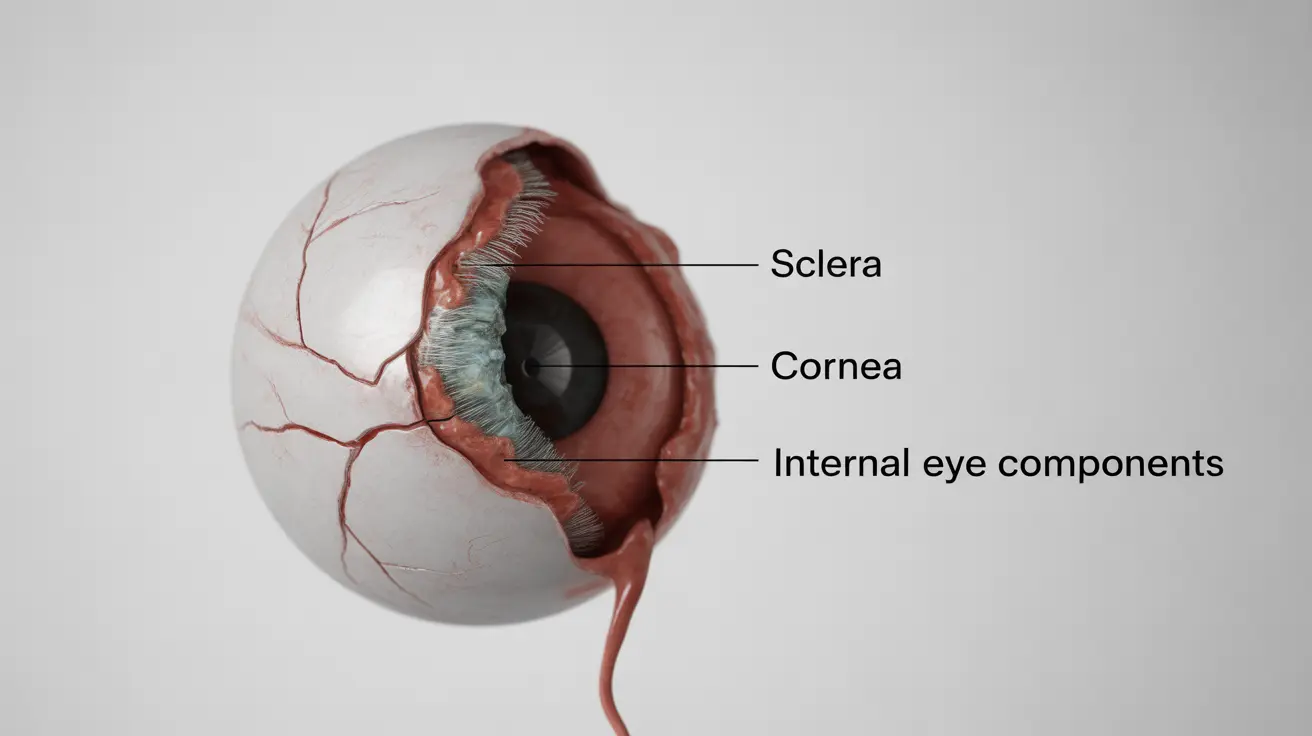A ruptured eyeball is a severe medical emergency that requires immediate attention to prevent vision loss and preserve eye function. This traumatic injury occurs when the outer layer of the eye is torn or punctured, potentially compromising the internal structures of the eye and threatening vision.
Understanding the causes, symptoms, and proper response to an eye rupture can make the difference between saving and losing vision. This comprehensive guide will explore everything you need to know about this serious condition and the steps required for proper treatment.
Understanding Eye Ruptures and Their Causes
A ruptured eyeball typically results from significant trauma to the eye or surrounding areas. Common causes include:
- Blunt force trauma from sports injuries
- Penetrating injuries from sharp objects
- High-velocity impacts
- Severe eye infections that weaken the eye wall
- Complications from previous eye surgeries
The eye's outer layer, known as the globe, consists of the tough, protective sclera and the clear cornea. When these structures are compromised, it creates an emergency situation that puts the entire eye at risk.
Recognizing the Signs of a Ruptured Eyeball
Identifying a ruptured eyeball quickly is crucial for preserving vision. Key symptoms include:
- Severe eye pain
- Sudden vision loss or blurred vision
- Visible deformity of the eye
- Blood in or around the eye
- Exposed internal eye tissues
- Profuse tearing
- Nausea and dizziness
If any of these symptoms occur following eye trauma, seek emergency medical care immediately. Do not attempt to rinse the eye or apply pressure, as these actions could worsen the injury.
Emergency Response and Medical Treatment
The immediate response to a suspected eye rupture is critical. Here's what should be done:
Immediate First Aid
- Protect the eye with a rigid shield
- Avoid touching or applying pressure to the eye
- Keep the patient still and calm
- Seek emergency medical care immediately
Medical Intervention
Treatment typically involves:
- Emergency surgery to repair the rupture
- Administration of antibiotics to prevent infection
- Pain management
- Assessment of internal eye damage
- Careful monitoring during recovery
Recovery and Long-term Outlook
Recovery from a ruptured eyeball varies depending on the severity of the injury and how quickly treatment was received. The healing process may involve:
- Multiple follow-up appointments
- Extended use of eye protection
- Vision therapy if needed
- Gradual return to normal activities
- Regular monitoring for complications
Prevention Strategies
Preventing eye ruptures is crucial. Key preventive measures include:
- Wearing appropriate protective eyewear during sports and hazardous activities
- Using safety glasses when working with tools or machinery
- Following proper safety protocols in industrial settings
- Avoiding activities that put unnecessary strain on the eyes
- Regular eye examinations to identify any weaknesses in eye structure
Frequently Asked Questions
What causes a ruptured eyeball and how can I recognize its symptoms? A ruptured eyeball is typically caused by severe trauma, such as blunt force impacts or penetrating injuries. Key symptoms include severe pain, sudden vision loss, visible eye deformity, and bleeding around the eye.
How is a ruptured eyeball diagnosed by an eye doctor? An eye doctor will perform a careful external examination and may use imaging techniques like CT scans or ultrasound to assess the extent of damage while avoiding direct pressure on the eye.
What immediate treatments are necessary for a ruptured eyeball to save vision? Immediate treatment includes protecting the eye with a shield, avoiding pressure or manipulation, and emergency surgical repair. Antibiotics and pain management are also crucial components of initial treatment.
Can a ruptured eyeball heal on its own or is surgery always required? Surgery is almost always required for a ruptured eyeball. The injury is too severe to heal properly on its own and requires professional surgical intervention to repair the damage and preserve vision.
How can I prevent sustaining a ruptured eyeball during daily activities or sports? Prevention involves wearing appropriate protective eyewear during high-risk activities, following safety protocols, and avoiding situations that could lead to eye trauma. Regular eye check-ups can also help identify potential vulnerabilities.




